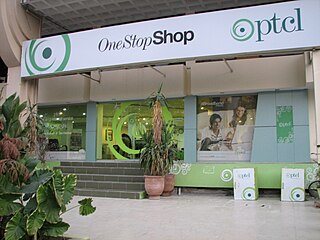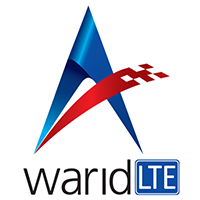Telecommunications in Burkina Faso include radio, television, fixed and mobile telephones, and the Internet.
India's telecommunication network is the second largest in the world by number of telephone users with over 1.1 billion subscribers as of December 2023. It has one of the lowest call tariffs in the world enabled by mega telecom operators and hyper-competition among them. India has the world's second-largest Internet user-base with over 904 million broadband internet subscribers as of December 2023.
Communications in Indonesia has a complex history due to the need to reach an extended archipelago of over 17,500 islands. The once important non-electronic communication methods of the past have given way to a considerable telecommunications infrastructure in contemporary Indonesia.
Telecommunications in the Philippines are well-developed due to the presence of modern infrastructure facilities. The industry was deregulated in 1995 when President Fidel Ramos signed Republic Act No. 7925. This law opened the sector to more private players and improved the provision of telecom services are better and fairer rates, leading to the creation of many telecommunication service providers for mobile, fixed-line, Internet and other services.
This article covers telecommunications in Sweden.
Telecommunications in Senegal include radio, television, fixed and mobile telephones, and the Internet.
Telecommunications in Sri Lanka commenced in 1858 after the first telegraphic circuit between Colombo and Galle was commenced. The sector continues to grow in the modern times.
The liberalization of Bangladesh's telecommunications sector began with small steps in 1989 with the issuance of a license to a private operator for the provision of inter alia cellular mobile services to compete with Bangladesh Telegraph and Telephone Board (BTTB), the previous monopoly provider of telecommunications services within Bangladesh. Significant changes in the number of fixed and mobile services deployed in Bangladesh occurred in the late 1990s and the number of services in operation has subsequently grown exponentially in the past five years.

The Telecom Regulatory Authority of India (TRAI) is a regulatory body set up by the Government of India under section 3 of the Telecom Regulatory Authority of India Act, 1997. It is the regulator of the telecommunications sector in India. It consists of a chairperson and not more than two full-time members and not more than two part-time members. The TRAI Act was amended by an ordinance, effective from 24 January 2000, establishing a Telecom Disputes Settlement and Appellate Tribunal to take over the adjudicatory and disputes functions from TRAI.
Local number portability (LNP) for fixed lines, and full mobile number portability (FMNP) for mobile phone lines, refers to the ability of a "customer of record" of an existing fixed-line or mobile telephone number assigned by a local exchange carrier (LEC) to reassign the number to another carrier, move it to another location, or change the type of service. In most cases, there are limitations to transferability with regards to geography, service area coverage, and technology. Location Portability and Service Portability are not consistently defined or deployed in the telecommunication industry.
Pak Telecommunication Mobile Limited or Ufone is a Pakistani GSM cellular service provider. It is the third mobile operator to enter Pakistani market. It started its operations under the brand Ufone, in Islamabad on January 29, 2001.

Paktel was the pioneer cellular operator of Pakistan. It was the trend setter company granted license to carry out cellular phone services in Pakistan, set up by Cable & Wireless. It carried out AMPS services until 2004 when the company switched to GSM technology.
Instaphone was Pakistan's first mobile communication service. It was launched by M/s Pakcom Ltd., a telecommunications company and the industry pioneer in the country. The company was jointly owned by M/s Arfeen and Millicom International (Luxembourg) and was acquired later by the Arfeen Group.

Pakistan Telecommunication Company Ltd., commonly known as PTCL is the national telecommunication company in Pakistan. PTCL provides telephone and internet services nationwide and is the backbone for the country's telecommunication infrastructure. The corporation manages and operates around 2000 telephone exchanges across the country, providing the largest fixed-line network. Data and backbone services such as GSM, HSPA+, CDMA, LTE, broadband internet, IPTV, and wholesale are an increasing part of its business.

Warid was a GSM, HSPA+ and LTE based mobile operator in Pakistan. It was the seventh mobile carrier to enter the Pakistani market. It commenced commercial operations on May 23, 2005 by the Abu Dhabi Group, a business conglomerate in the Middle East and a major investor in Pakistan. It was the first venture of the group in the field of Telecommunication.

Established in 1998, ECTA is the leading pan-European telecoms association promoting market liberalisation and competition in the European communications sector, fostering ‘competition and open access’ and developing policy by representing ‘new entrant’ interests to European institutions and Government bodies. ECTA seeks to create confidence for investors through clear and consistent regulation to unlock the growth potential of Europe’s businesses.
The Internet in Pakistan has been available since the early 1990s. Pakistan has over 130 million internet users, making it the 7th-largest population of internet users in the world.
Botswana Telecommunications Authority (BTA) is a dissolved independent commission that was responsible for regulating all matters related to telecommunications, postal services of Botswana and has been succeeded by Botswana Communications Regulatory Authority. The Minister appoints all five board members, who serve on a part-time basis. The BTA is mandated to promote the development and provision of efficient telecommunications and broadcasting services in Botswana, under the terms of the Telecommunications Act 15 of 1996. There have been legal disputes between the BTA and licensed operators, springing from issues related to interconnection and pricing.
The Telecommunications Dispute Settlement and Appellate Tribunal (TDSAT) was established to adjudicate disputes and dispose of appeals with a view to protect the interests of service providers and consumers of the Indian telecommunications sector and to promote and ensure its orderly growth.
3G mobile telephony was relatively slow to be adopted globally. In some instances, 3G networks do not use the same radio frequencies as 2G so mobile operators must build entirely new networks and license entirely new frequencies, especially so to achieve high data transmission rates. Other delays were due to the expenses of upgrading transmission hardware, especially for UMTS, whose deployment required the replacement of most broadcast towers. Due to these issues and difficulties with deployment, many carriers delayed acquisition of these updated capabilities.





